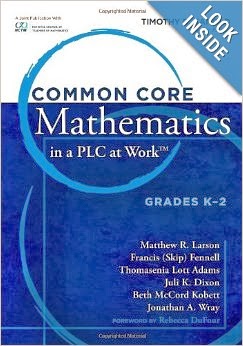Addition is coming to Kindergarten! We are wrapping up a unit on classifying, sorting, representing, etc. The next step is officially identified as "
Understanding Addition and Subtraction of Numbers to 10."I am
counting on a lot of research, my amazing team and some trial and error to meet these standards.
In planning this two-month unit, I'm scratching my head at a few things. How do I pace? How do I pre-test? Will they get sick of the material over the next 9 weeks?? How can I make WORD PROBLEMS comprehensible to my ELL students? Scary stuff...potentially. The first essential question for me this week is:
Do my students have the background knowledge and requisite skills that are foundations for addition and subtraction?
We've had a pretty heavy dose of subitizing, or promoting number (both numeral and quantity fluency) through identification
practices that look a lot like these. I've retested and am reteaching writing numerals 0-9, but that's the easy stuff. What are some essential things to review, reteach and reassess before teaching addition to Kindergarteners?
My best guesses are as follows, but please add more ideas, missing pieces or counterarguments below!
Center 1: Recognizing numbers, creating number sets
Student 1 chooses a card and reads the number. Student 2 writes the number and a set of dots that matches it. Then, S1 reveals the card and both students compare the numerals and quantities, making corrections if needed.
Center 2: Comparing Numbers
Using a handwritten, mixed-up number line, students try to cover up numbers that match the qualifiers on 2 sets of cards. Set 1: Cards labeled More than, Less than or Equal to (Same as). Set 2: Numerals 1-10. Students turn over one card from each pile. Then, use a counter to cover up one number on the line that matches the cards. EX: Less than and 8 would lead the student to put the counter on any numeral 1-7 on their number line. Playing in partners, the winner is the one who covers all their numbers first. Optional: Yells out, "Face Off!"
Center 3: Number Reporter
Students choose a domino and count the dots. Then, use popsicle sticks to create that quantity in tally marks. Next, recreate the written tally marks and counting in our perennial favorite app,
ShowMe.
I chose this center because we are also practicing
skip counting by 5's.
Center 4: Math Journal
Essentially used to "show what we know" about a numeral/quantity. It will be coming soon to this blog for free! If you can't wait until then,
try my TpT store. *If you teach in BSD100, email me and I'll send you my stuff for free today!
What else am I missing to prep my students for composing and decomposing? We are familiar with word problems and their symbols from our weekly calendar problem, but I still feel like something is missing? Not a short or simple answer, I am sure...



















